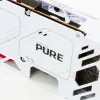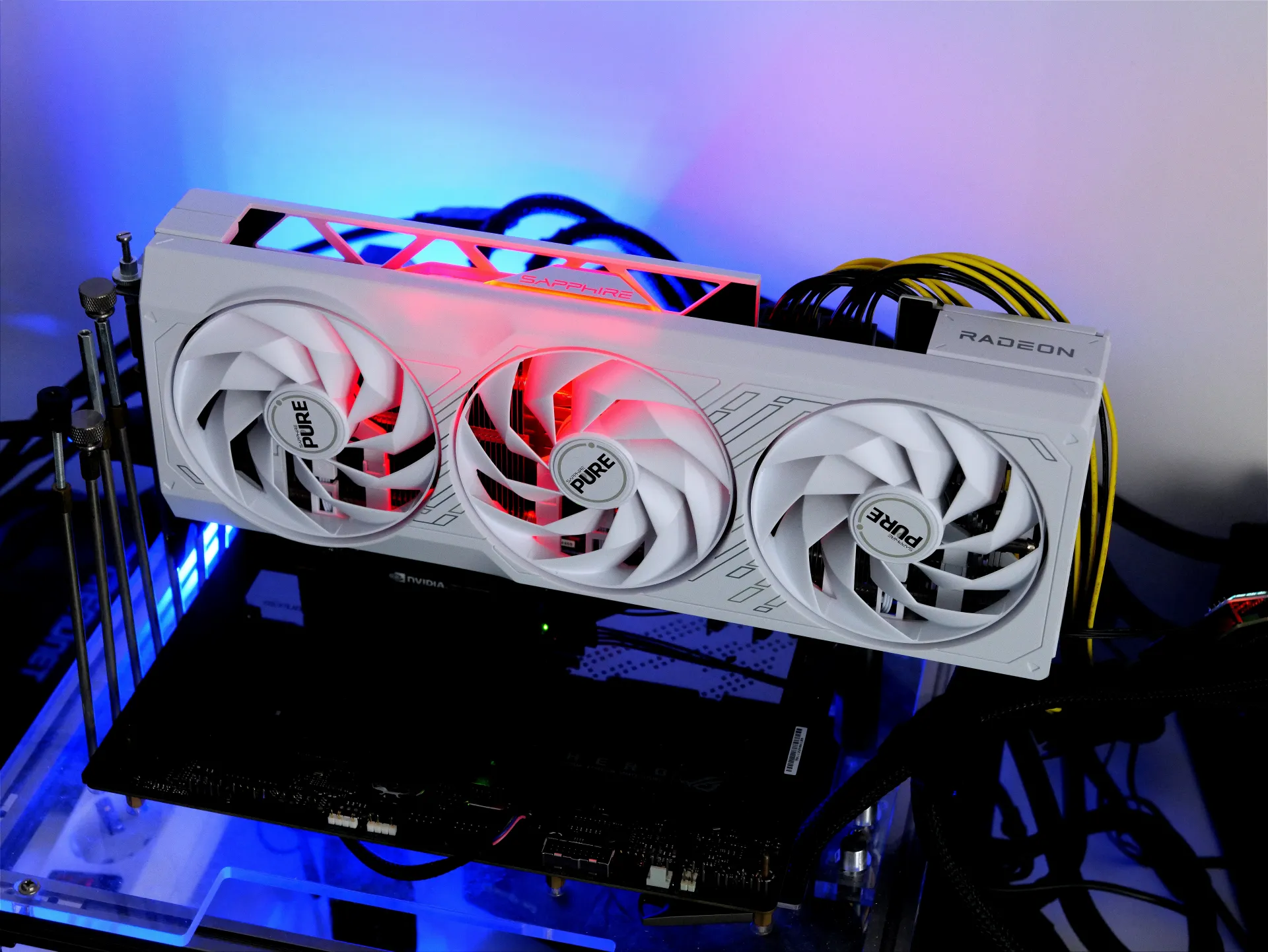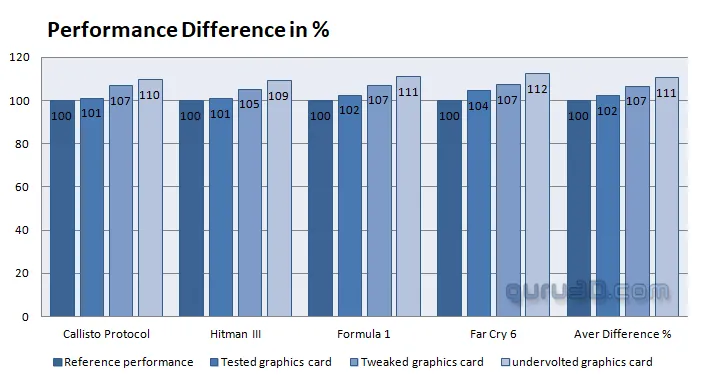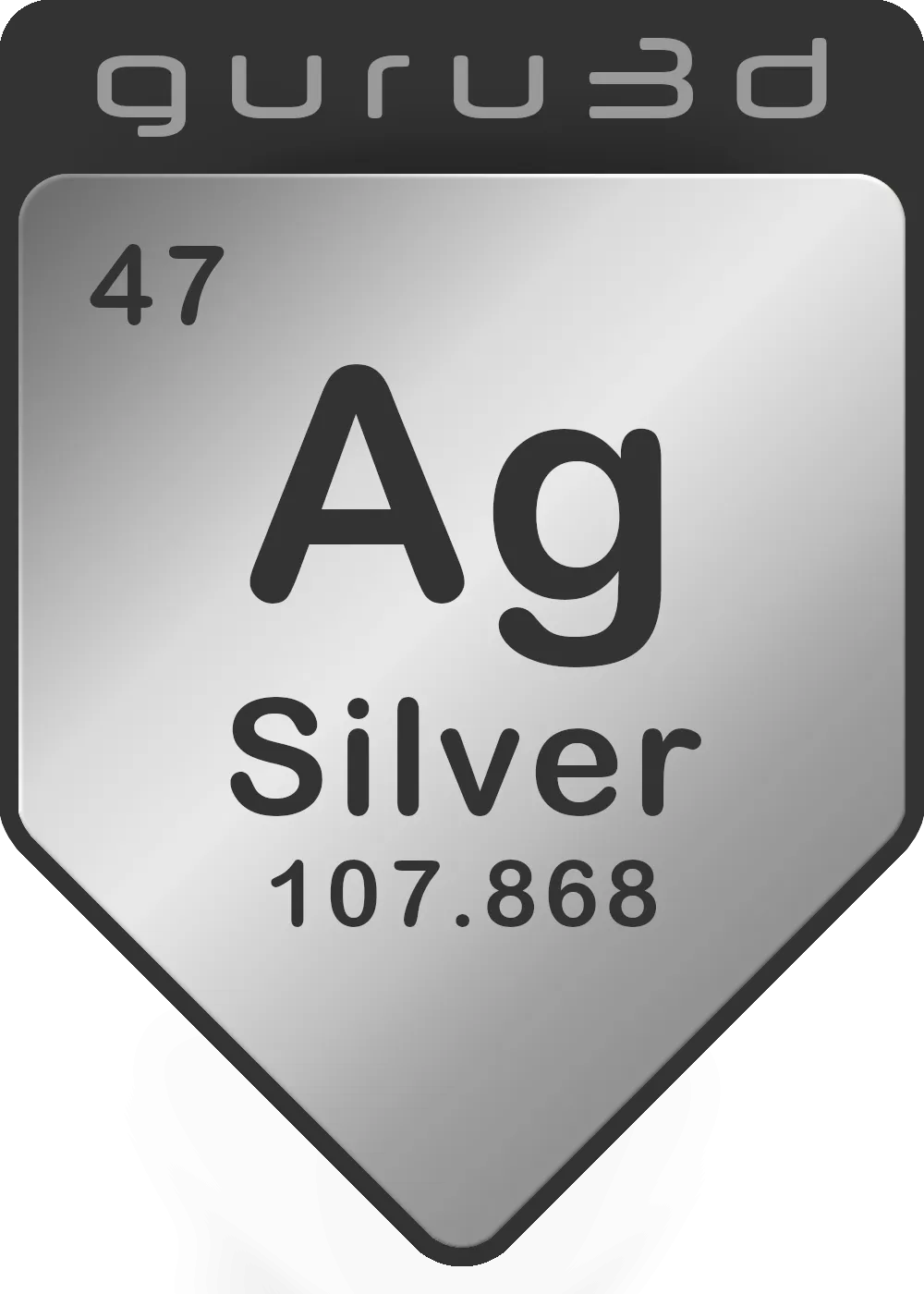Final words and conclusion
The Sapphire RX 7700 XT PURE graphics card differentiates itself with its design, aimed at complementing white-themed PC builds. Sapphire's approach with this model ensures broader availability compared to the typically limited and more expensive "white edition" versions from other brands. From a design perspective, the card incorporates red elements and lighting, which may not entirely align with its predominantly white color scheme. A unified white or RGB lighting would be a more cohesive choice. The current lighting design highlights the center of the card but does not extend across the entire top area, which could enhance its visual impact. The RX 7700 XT PURE is priced at $469, a slight increase from the base model's MSRP of $449. This price increment is for the overclocked capabilities and the enhanced cooling system. However, this price point is close to the RX 7800 XT, which has a base MSRP of $499, presenting a challenge in differentiating the RX 7700 XT PURE's value proposition, especially when prices of the two models converge.
Performance
The RX 7700 XT graphics cards deliver proper rendering suitable for both mainstream and high-end gaming. Although the progression from its predecessor, the 6800, is not significant, it does offer improved ray tracing performance. These cards are designed for gamers who are looking to upgrade their monitors to WQHD, with the RX 7700 XT and 7800 XT supporting these QHD resolutions. The RX 7000 series features an upgraded rasterizer engine that addresses previous performance bottlenecks, showcasing impressive raw shader engine capabilities. While NVIDIA's Ray Tracing and DLSS3 technologies remain ahead of AMD's FSR2 and FSR3, the performance of the RX 7700/7800 XT with FSR2/FSR3 is commendable, and utilizing FSR is advisable. Overall though the card was marginally faster—by perhaps 1 or 2 percent—than the reference model.
Cooling & noise levels
Our test shows that gaming will get you an approximate volume level of an excellent 32-33 decibels, which is silent. Moreover, the graphics card temperature is around 60 degrees Celsius. Furthermore, our utilization of FLIR imaging failed to unveil any worrisome observations.
Energy
Please keep in mind that the Radeon RX 7700 XT is positioned as a gaming product intended for the mainstream market and it consumes a fair amount of energy. When operating at maximum load, the reference edition draws approximately 235 Watts on average (total board power or TBP). This power consumption is directly linked to the amount of heat emitted by the GPU, which is situated within an enclosed casing.
Coil whine
Every graphics card will inevitably produce a discernible buzzing sound known as coil whine when operating at high FPS. Is it bothersome? It becomes noticeable once you push the frame rates to extremely high levels. In a closed computer case, this noise tends to recede into the background. However, when the chassis is open, the coil whine or squeal becomes audible. Almost all graphics cards exhibit this phenomenon to some extent, particularly when operating at higher frame rates. Despite its presence, we have not noticed it enough to be a significant inconvenience.
Pricing
The reference edition comes with a price tag of USD 449, which still can be considered substantial for a device primarily used for playing PC games in Full HD resolution. In the European Union, you must convert the currency and factor in the value-added tax, bringing the total to around 299-309 euros. Moreover, advanced AIB cards will be even more expensive. Based on MSRP this card, however, does offer the best bang for buck. This AIB card will, however, cost roughly 475 USD in detail, and for that money we'd rather pick up a 7800 XT.
Tweaking
The card can be effectively tweaked with ease; one beneficial feature is the power limiter, allowing for a wattage increase of up to +15%. This serves as the initial and fastest option for tweaking. By utilizing this option, you can achieve enhanced performance while staying within the card's default power allocation. Additionally, the boost clock frequency can be set at a suitable 2850 MHz, although it may dynamically fluctuate to approximately 2800 MHz due to variations in frequencies across different game titles. Furthermore, the memory can be optimized to operate at around 19.2 Gbps. When all these adjustments are combined, they result in approximately 5% additional performance gains in demanding GPU scenarios, measured relative to the baseline performance. Add to that the factory tweak offering 2%, and you're at 6-7% additional performance. If you have a bit more time to spare, fool around with undervolting as described on the overclocking pages. You can yield roughly 10% extra performance in total.
Conclusion
Sapphire's RX 7700 XT Pure emerges as a nice contender for those seeking a cool and quiet PC gaming experience, not to mention its appealing design. It appears to be a worthwhile investment, especially for those who value low noise levels, justifying an extra $20 over the base models. After all, silence is invaluable. Sapphire has launched a top-tier graphics card tailored for superb WQHD performance, ensuring a balanced gaming experience. The card operates remarkably quietly at 32-33 DBa, maintaining temperatures around 60 Degrees Celsius. In terms of performance, it offers a slight edge with an additional 2-3% speed increase. Although the card's price is tentatively set, this is yet to be confirmed and may vary. The Radeon RX 7700 XT series shines in rasterized shading, delivering steady QHD gaming. The inclusion of an extra L3 cache is a boon, particularly enhancing performance in Full HD/Quad HD resolutions and CPU-heavy games. Despite its impressive capabilities and stylish design, the card's power consumption is on the higher side. While NVIDIA continues to excel in Raytracing, Tensor, and AI-driven tasks, AMD is still catching up. Nevertheless, for rasterized shading in gaming, the Radeon RX 7700 XT holds its ground firmly. It's geared towards those who value both efficiency and aesthetics in their gaming setup.
- Download AMD Radeon drivers
- Sign up to receive a notification when we publish a new article.
- Or go back to Guru3D's front page
- Hilbert, LOAD"*",8,1.




